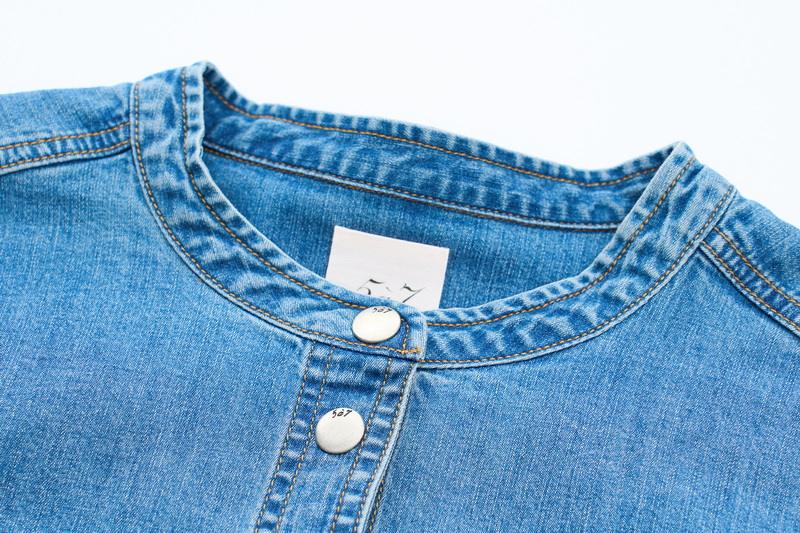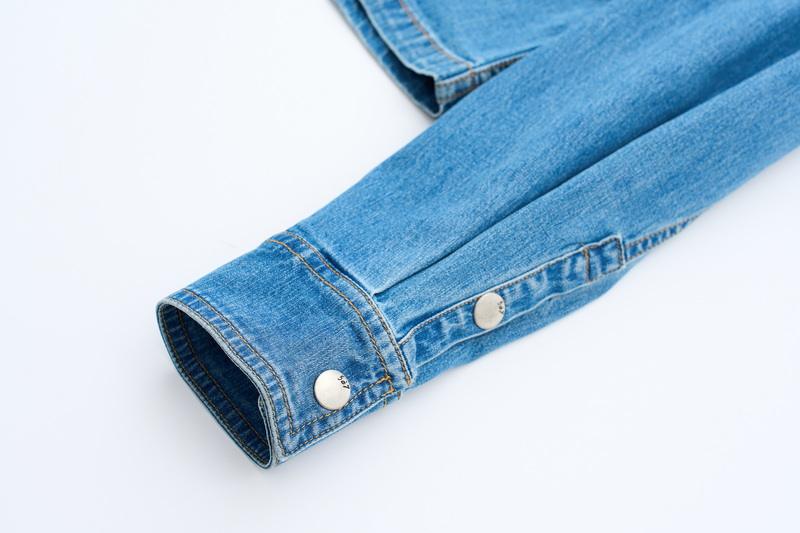Clothing processing is the backbone of the apparel industry, encompassing every step from fabric sourcing to the final packaging of garments. This comprehensive process ensures that the clothing produced meets the highest standards of quality, durability, and design accuracy. In this article, we will explore why clothing processing is essential for producing quality apparel, the stages involved, the benefits it offers, and how it impacts both manufacturers and consumers. We will also include relevant insights to illustrate key points and conclude with a detailed FAQ section to address common questions.

What Is Clothing Processing?
Clothing processing refers to the entire sequence of activities involved in transforming raw materials, such as fabric and trims, into finished garments ready for sale. This includes fabric inspection, pattern making, cutting, sewing, quality control, finishing, and packaging. It is a critical part of the apparel supply chain that ensures garments meet design specifications, fit standards, and quality benchmarks.
The clothing processing workflow is complex and requires coordination between multiple departments and skilled workers. Each stage must be executed with precision to maintain the integrity of the garment and meet the expectations of both brands and consumers.
The Importance of Clothing Processing in Apparel Quality
Ensuring Material and Fabric Quality
The foundation of any quality garment is the fabric. Clothing processing begins with rigorous fabric inspection to check for defects, color fastness, shrinkage, and texture consistency. High-quality fabric selection prevents issues like fading, tearing, or distortion after washing, which directly affects the garment’s longevity and appearance.
Fabric inspection is not a one-time event but a continuous process. It involves checking fabric rolls for flaws such as holes, stains, uneven dyeing, or weaving errors. This step is crucial because fabric defects can compromise the entire garment, leading to customer dissatisfaction and returns.
Precision in Pattern Making and Cutting
Pattern making is the technical art of creating templates that guide fabric cutting. Accurate patterns ensure garments fit well and maintain the intended style. Cutting must be precise to avoid fabric wastage and ensure all pieces align perfectly during sewing.
Advanced technologies such as computer-aided design (CAD) and automated cutting machines have revolutionized this stage of clothing processing. These tools increase accuracy, reduce human error, and optimize fabric usage, which is both cost-effective and environmentally friendly.
Skilled Sewing and Assembly
The sewing stage assembles the cut fabric pieces into a garment. Quality sewing involves strong, even stitches, proper seam allowances, and attention to detail such as zipper placement and button attachment. Poor sewing can lead to weak seams and garment failure.
Experienced sewing operators understand the nuances of different fabrics and garment types. For example, stretchy fabrics require specialized stitching techniques to maintain elasticity, while delicate fabrics need gentle handling to avoid damage.
Rigorous Quality Control
Quality control (QC) is integrated throughout the clothing processing stages. It includes pre-production inspections, in-process checks, and final product evaluations. QC helps identify defects early, reduces waste, and ensures garments meet size, color, and design specifications.
QC teams use standardized checklists and measurement tools to verify garment dimensions, seam strength, color matching, and overall appearance. This systematic approach minimizes the risk of defective products reaching the market.
Finishing and Packaging
Finishing processes like pressing, fusing interlinings, and spot cleaning enhance the garment’s appearance and durability. Proper packaging protects the garment during shipping and presents it attractively to consumers.
Finishing also includes adding labels, tags, and sometimes special treatments such as waterproofing or wrinkle resistance. Packaging must be designed to prevent damage during transit and to reflect the brand’s image, which influences consumer perception.
The Clothing Processing Production Process
Stage 1: Development
– Design Submission: Brands provide detailed tech packs and design specifications, including fabric types, colors, trims, and measurements.
– Material Sourcing: Manufacturers source fabrics and trims that meet quality and design requirements, often working with multiple suppliers to ensure availability and cost-effectiveness.
– Pattern Making and Sampling: Patterns are created, and samples are produced to refine fit and style. This stage may involve several iterations to perfect the garment before mass production.
Stage 2: Production
– Bulk Manufacturing: Once samples are approved, mass production begins with fabric cutting, sewing, and assembly. Efficient workflow management is essential to meet deadlines and maintain quality.
– Quality Control: Continuous inspections ensure consistency and defect-free garments. QC teams monitor every batch and conduct random sampling to detect issues early.
– Finishing and Packaging: Final touches and packaging prepare garments for shipment. This includes ironing, folding, tagging, and packing according to retailer or brand specifications.

Benefits of Effective Clothing Processing
| Benefit | Description |
|---|---|
| Cost Efficiency | Reduces material waste and rework costs by catching defects early. |
| High Quality | Ensures garments meet design and durability standards, enhancing brand reputation. |
| Faster Time to Market | Streamlined processes reduce production delays and help meet delivery deadlines. |
| Consumer Satisfaction | Produces comfortable, well-fitting, and durable clothing that meets customer expectations. |
| Brand Value | Consistent quality builds trust and loyalty among consumers. |
Effective clothing processing not only improves the final product but also optimizes resource use, reducing environmental impact. By minimizing fabric waste and energy consumption, manufacturers contribute to more sustainable fashion practices.
Challenges in Clothing Processing
Despite its importance, clothing processing faces several challenges:
– Loss of Control: Outsourcing production can lead to less direct oversight of quality and timelines. Brands must establish strong partnerships and clear communication channels with manufacturers.
– Intellectual Property Risks: Sharing designs with manufacturers requires safeguards to protect proprietary information. Non-disclosure agreements and secure data handling are essential.
– Supply Chain Disruptions: Political instability, natural disasters, or logistical issues can delay production and delivery, affecting brand reputation and sales.
– Labor Issues: Ensuring fair labor practices and safe working conditions is critical, as unethical practices can damage brand image and lead to legal consequences.
– Technological Adaptation: Integrating new technologies into clothing processing requires investment and training but is necessary to stay competitive.
Innovations in Clothing Processing
The apparel industry is evolving rapidly with technological advancements that enhance clothing processing:
– Automation and Robotics: Automated cutting machines, sewing robots, and AI-powered quality inspection systems increase efficiency and reduce human error.
– 3D Virtual Sampling: Digital garment simulation reduces the need for physical samples, saving time and resources.
– Sustainable Materials and Processes: Use of eco-friendly fabrics and waterless dyeing techniques aligns clothing processing with environmental goals.
– Data Analytics: Real-time monitoring of production lines helps identify bottlenecks and optimize workflow.
– Customization and On-Demand Production: Advances in processing allow brands to offer personalized garments with shorter lead times.
These innovations not only improve quality but also enable brands to respond faster to market trends and consumer demands.
The Impact of Clothing Processing on Consumer Experience
Consumers today expect more than just attractive clothing; they demand comfort, durability, and ethical production. Effective clothing processing directly influences these factors:
– Fit and Comfort: Accurate pattern making and sewing ensure garments fit well and feel comfortable.
– Durability: Quality fabrics and strong construction extend garment life, providing better value.
– Appearance: Proper finishing and quality control maintain the garment’s look after multiple washes.
– Ethical Assurance: Transparent processing practices reassure consumers about labor conditions and environmental impact.
Brands that invest in superior clothing processing build stronger relationships with their customers, leading to repeat purchases and positive word-of-mouth.
Conclusion
Clothing processing is indispensable for producing quality apparel that meets consumer expectations and industry standards. From fabric selection to final packaging, each step plays a vital role in ensuring garments are durable, well-fitted, and visually appealing. Effective clothing processing not only enhances product quality but also improves cost efficiency, reduces waste, and strengthens brand reputation. For fashion brands and manufacturers, investing in robust clothing processing systems is key to success in the competitive apparel market. As the industry embraces new technologies and sustainability practices, clothing processing will continue to evolve, driving innovation and excellence in apparel production.

FAQ: Frequently Asked Questions About Clothing Processing
1. What are the main stages of clothing processing?
Clothing processing includes fabric sourcing and inspection, pattern making, cutting, sewing, quality control, finishing, and packaging.
2. How does quality control improve garment production?
Quality control minimizes defects, ensures compliance with design specifications, reduces waste, and helps deliver products on time, thereby maintaining brand reputation.
3. Why is fabric inspection important in clothing processing?
Fabric inspection ensures the material meets strength, colorfastness, shrinkage, and texture standards, which are critical for garment durability and appearance.
4. Can clothing processing be outsourced without losing quality?
Yes, but it requires choosing experienced manufacturers, clear communication, and strict quality control measures to maintain standards and protect intellectual property.
5. How long does the clothing processing cycle typically take?
Production time varies by order size and complexity but generally ranges from 4 to 8 weeks, excluding fabric sourcing and sampling stages.
Hot Tags: clothing processing, China, Global, OEM, private label, manufacturers, factory, suppliers, manufacturing company